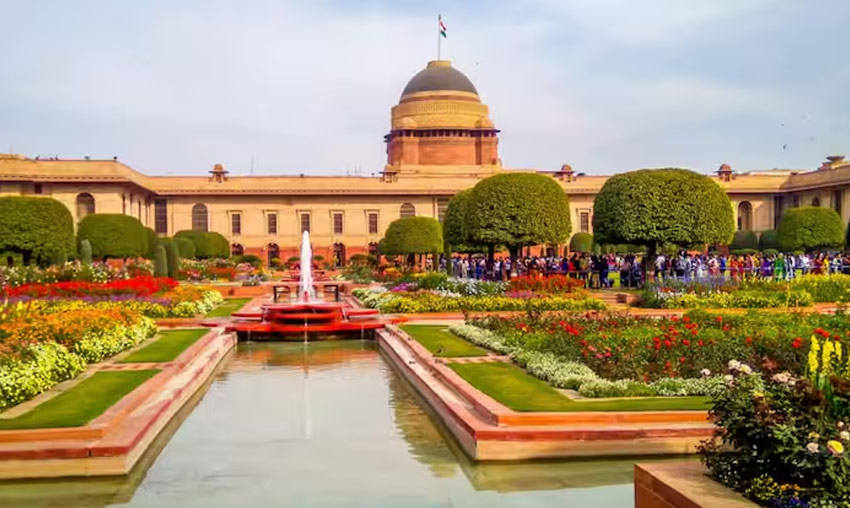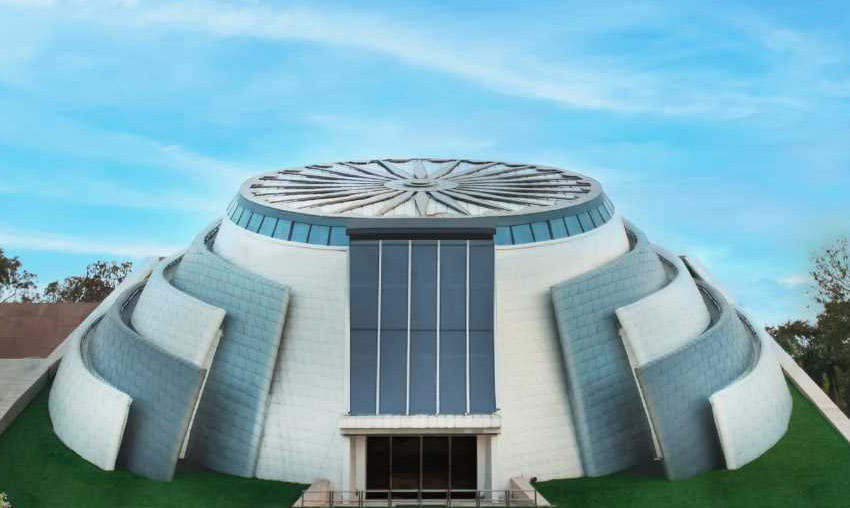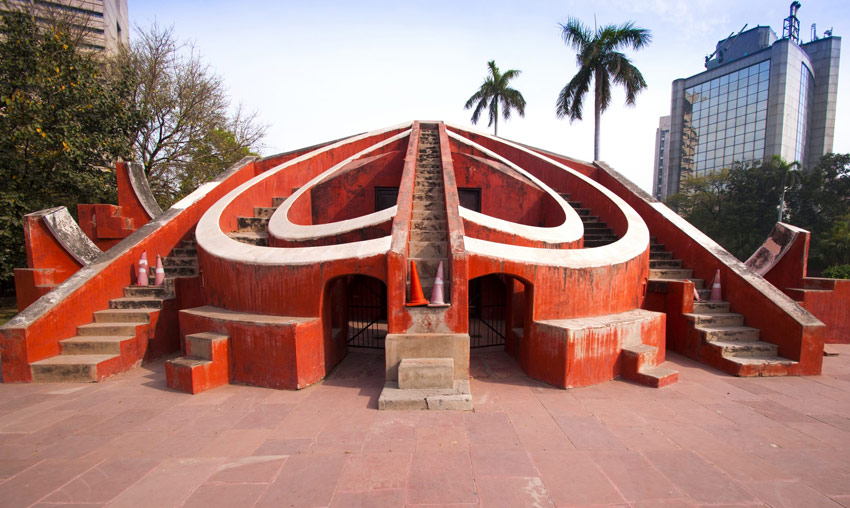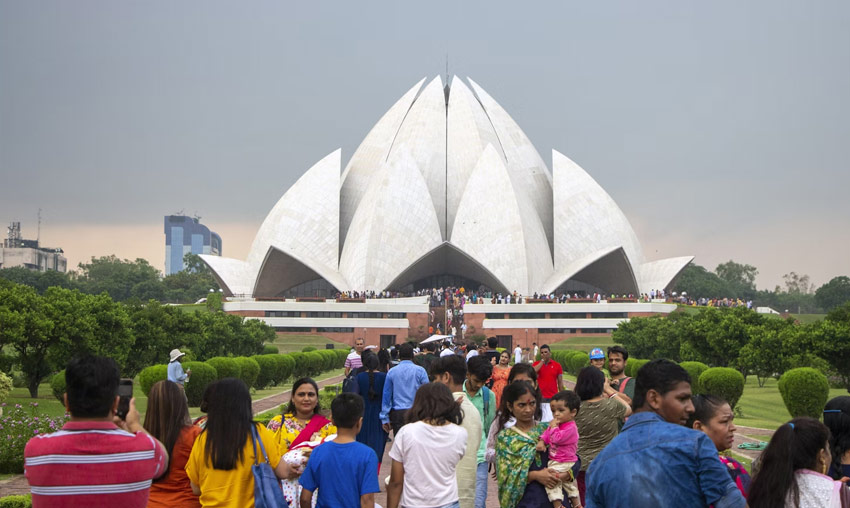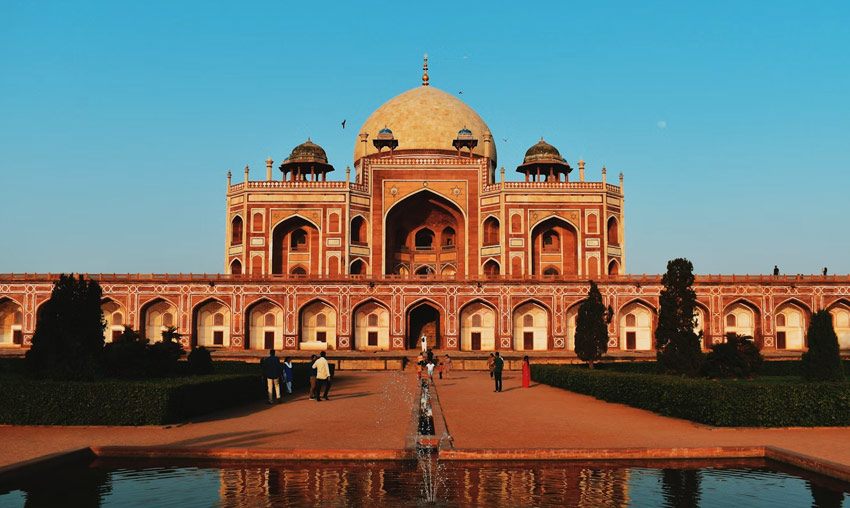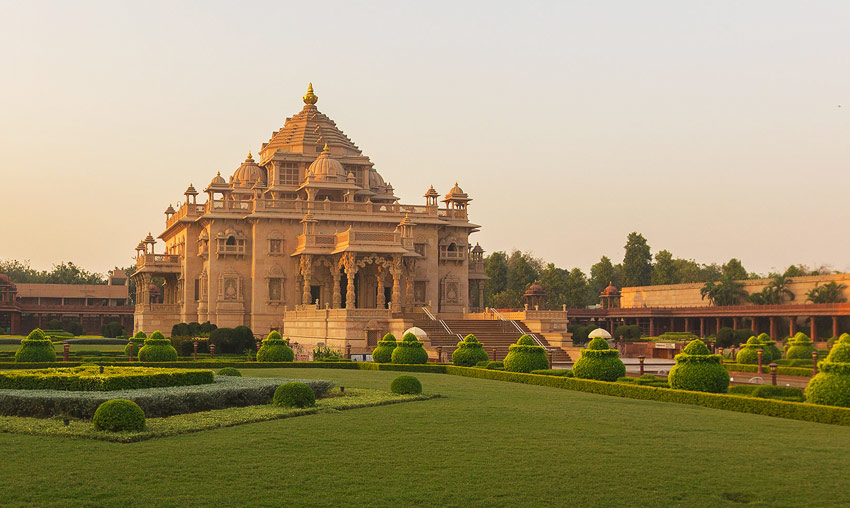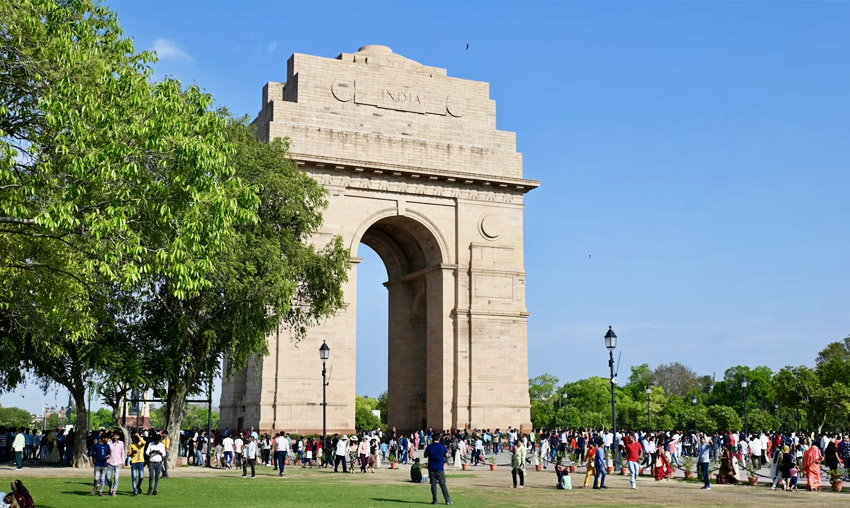Mughal Gardens, Delhi- Timings, Tickets, How to Reach
Inside the Rashtrapati Bhawan Complex are the Mughal Gardens, also referred to as the “soul” of the Presidential Palace. The gardens, which span 13 acres and were created by Sir Edwin Lutyens in 1917 for Lady Harding, are a magnificent example of how Mughal and British architectural styles can coexist. The Mughal Gardens in Delhi have succeeded in emulating the attractiveness and producing the ideal verdant vista, drawing inspiration from the ones in Jammu and Kashmir. Awe-inspiring circular, spiritual, bonsai, herbal, tactile, and musical gardens are found throughout the entire complex. The gardens are home to a wide range of flowers that bloom according to the seasons, creating an overall euphoric and stunning scene.
Among the more than 159 flower species found in the Mughal Gardens are rare and endangered forms of tulips, daffodils, Asiatic lilies, hyacinth, viscaria, and other plants. In addition, the building has four water tanks with glistening water fountains emerging from red sandstone lotus bases. During the Udyanotsav festival in February and March, this lovely illustration of the great splendour of nature is accessible to the public for a limited period.
Structure of Mughal Gardens
Main Garden
Two strips, each extending vertically from East to West and North to South, have been used to divide this landscape into grids. There are six lotus-shaped water fountains at the intersection of these grids. The captivating waterfall creates a wonderful sight, moving at such a steady pace that it seems to be frozen. There are bread crumb-filled stands in the middle where stray birds can graze.
Garden Terrace
There are two lengthy strips of green area on either side of the main garden, at a slightly elevated level. A glistening waterfall that cascades inwards to resemble a well adorns the core. Arbours adorn the western tips, while two intricately constructed sentinel posts are located at the eastern tips.
Long Garden
Located west of the Main Garden, this area is also known as the “Purdah Garden.” Enclosed by walls rising to a height of 12 feet, this area functions as a rose garden with multiple rose beds and a variety of happy rose kinds. Bougainvillaea, grave vines, and rose bushes adorn the central pergola.
The blossoming circular garden, horticultural office, greenhouses, nurseries, bonsai collection, etc. are all located very close by.
Highlights of Mughal Gardens
1. Thousands of tulip bulbs in various hue variants are imported from as far away as the Netherlands.
2. Vibrantly coloured flower carpets adorn the Central Lawn, exhibiting the expertise and imagination of the on-staff gardeners and designers.
3. During the festival, the beats of the music—mostly Vandemataram—are flawlessly synchronised with the water fountains.
4. To lessen air pollutants, new plants that filter the air have recently been planted.
5. A unique little corner of a cactus is on show.
6. A display of the produce and fruits grown organically on the President’s Estate.
Best Time To Visit Mughal Gardens
The garden is only available for a brief period of time between February and March, during the Udyanotsav celebration. The dates and times of these trips vary every year and are disclosed soon before they start. Before going, we advise you to verify the same online.
Tips For Visiting Mughal Gardens
Your water bottles, purses, briefcases, and other belongings must be turned in at the door. As a result, we advise leaving your valuables at home.
How To Reach Mughal Gardens, Delhi
Delhi is a state that is well-connected by state-operated buses and metro. Central Secretariat Metro, which is located on the yellow line, is the closest metro station to Mughal Gardens. You can hire a local or a battery-operated rickshaw to get to the garden, which is just roughly two km from the metro. For a more pleasant ride, you can alternatively reserve a taxi. As an alternative, using one of the buses will get you there more affordably.
Timings : The time and the dates of public visits are changed annually and are announced shortly before the visits commence. We recommend you to check online for the same before visiting.
Time Required : 1 – 3 hrs
Entry Fee : No Entry Fee
